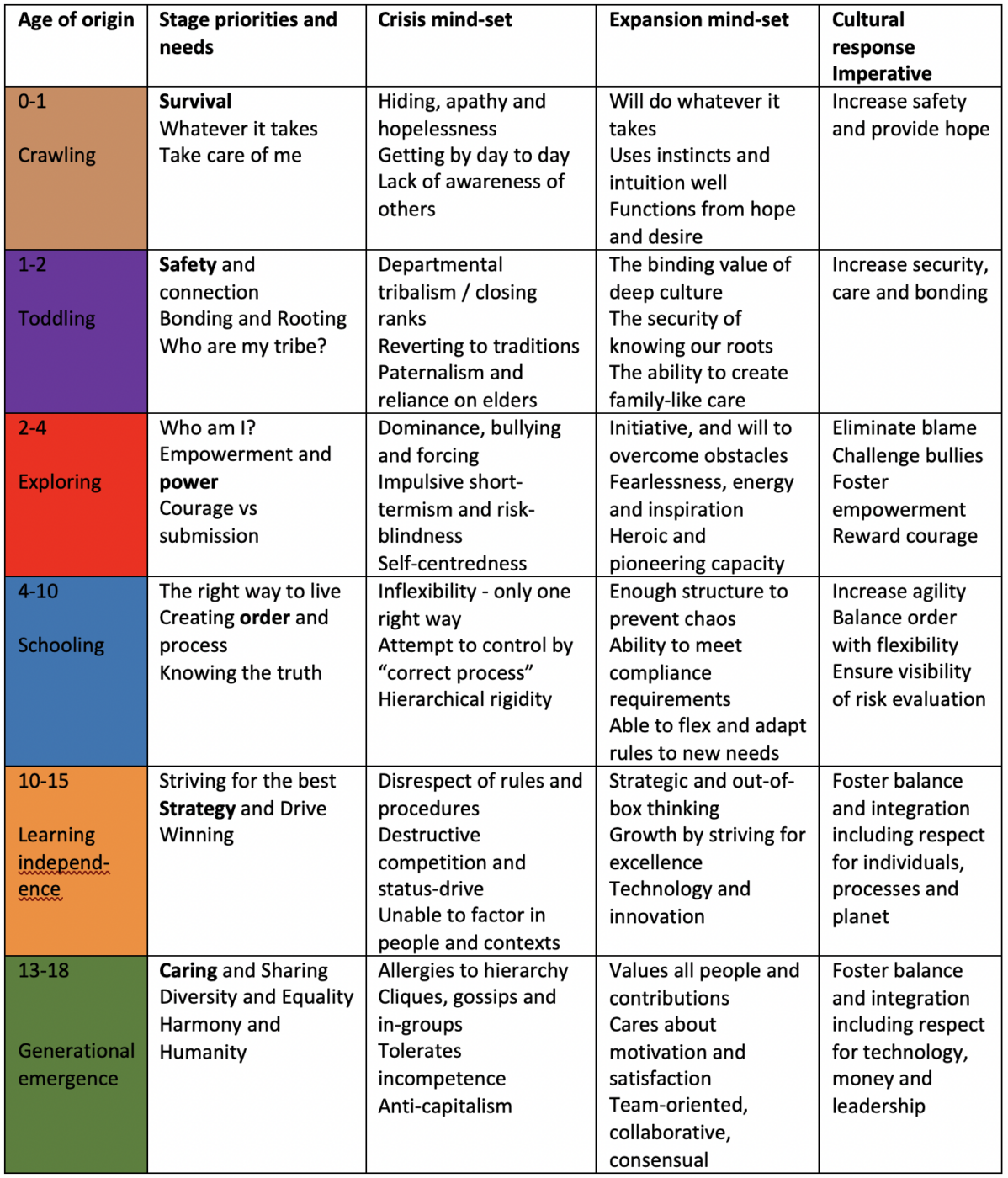How we respond to long-term stress
Have you seen colleagues behave like this, perhaps when they didn’t previously:-
- Hunkering down into invisibility or taking short term risks
- Becoming hopeless and apathetic
- Entrenching old ways, behaving tribally or looking for others (elders and heroes) to rescue them
- Being excessively combative, defending turf, strident and dominating
- Stifling innovation and indulging in excessive bureaucracy, seeking authority through controlling the gates, no longer supporting strategic risks that were previously the norm
These are examples from a longer list that reflect an increasingly common scenario. They can be called crisis mind-sets or downshifting. Since the people behaving this way may be senior people with established track records, it is important to know why it is happening and how to address it.
We expect leaders to manage stress, to be strong and robust, to “suck it up”. Rightly so; no-one wants leaders who fall apart at the first sign of difficulty. However, while essential in a short-term crisis this can be disastrous during extended periods of challenge.
If you saw these behaviours at other times you would quite likely look to remedy them through individual interventions, coaching or development. You might even look toward team coaching. All of these are appropriate but they easily miss a critical part of the picture. Why are these responses happening, possibly becoming endemic and why do they take these forms? What other responses might be needed?
Physiologically, humans develop through established sequences so we know when to expect walking or teething. There are equivalent patterns for our psychology. These priorities are embedded in our being as we develop. They don’t disappear and can be triggered by the conditions we encounter, such as stressors. Here is a very simplified picture of that developmental sequence.
Every stage is a necessary adaptation to the conditions we grow up in. Our earliest survival strategies as babies are hardwired and stem from a time when we truly were helpless. As infants we were separate, unsafe on our own. The adaptations are deep and neurophysiological. We easily revert under stress to earlier stages of development and some of this downshift is biological in origin. Hormonal responses are involved, affecting levels and balances of Cortisol, Dopamine and Oxytocin. We cannot avoid being driven.
These responses are not cognitive. Humans do not do analysis before age 5 and we are not good at it until much later. Under long-term stress, biology is stronger than cognition. While organisations can and do work to manage these responses, for example with mindfulness or embodiment training, the adaptive mechanisms remain.
We have to deal with the conditions that these mechanisms are responding to if behavioural interventions are not to be undermined or overwhelmed by deeper survival impulses. This requires working consciously with the culture itself. When layoffs are taking place, when a merger is undermining identity and historical bonds, when sector crisis conditions threaten the whole system, a collaborative response is more essential than ever. To accept the fear and the downshift into crisis thinking can rapidly become a self-fulfilling spiral downwards into deeper collapse.
Each of the crisis mind-sets is specific and to be effective, the cultural response needs to match that. The awareness and responsiveness of HR functions and senior leadership is key to this and since no-one is certain to be immune this calls for strong and focused intention, and may include a need for some element of outside support.
For a deeper description of these patterns there is a fuller explanation here. For an exploratory conversation about what you are seeing in your organisation or possibly for support in dealing with these patterns, please contact jon@futureconsiderations.com or call 07771 798608






Leave a Reply